Hydropower is a great source of energy that doesn’t suffer the same intermittency problems as other renewables. But dams fail. A lot. About 95% of the existing hydropower systems in the States were built before 1995, and over half operate using equipment designed over 80 years ago.1 This aging infrastructure can be not only unreliable, but dangerous to local populations, human and animal alike.2 That said, hydropower doesn’t always have to be postcard-perfect or 67 stories high. It actually has a lot of room for growth…possibly by shrinking. That’s because small hydropower (or SHP) has the potential to literally usher in a new generation.
Several companies are working toward integrating hydroelectric turbines on a smaller scale and with a smaller ecological footprint. Between new designs like Vortex Hydrokinetics’ bladeless turbine and Turbulent’s snail-shaped “fish-friendly” system (say that 10 times fast), there’s plenty of opportunity to take advantage of rivers without having to worry about the safety of ourselves or our scaly friends.
So, how else can small hydro impact our lives? And why should we give a dam(n)?
Several of you have shared with me some exciting developments in hydro power that looks to combine hydroelectric efficiency and safety on a micro scale. These include the likes of SHP bladeless turbines by Vortex Hydro (yes, bladeless) and the company, Turbulent. This video was also inspired by my friend Ryan’s coverage on Vortex’s bladeless design a few months back. He goes into detail when explaining the engineering side of things, so if you’re interested in the nuts and bolts, be sure to check out his video.
We’ll be diving deep into how these turbines work…further downriver. But before we do that, let’s talk about why there’s more to small hydro than decentralization, and what’s at stake here. With SHP, nearby communities can reap the benefits of electricity produced by constantly-flowing water without the typical dam mainstays of high velocity, high volume of flow, and high…heights…otherwise known as the hydraulic “head.”
The hydraulic head is an important part of our energy calculation. If you don’t know what that is, don’t worry, I didn’t either. “Hydraulic” is … well … related to water. “Head” is the potential energy per unit of weight, so a higher tower has a higher head. Potential energy is calculated using this quantity, and the larger the drop, the more potential energy available, as any daredevil who rides over the edge of a waterfall will tell you.3
Let’s zoom out here for an example of just how powerful these elements can be. You can’t get a much better study of hydro anatomy than the Itaipú Dam, one of the world’s largest.4 Situated on the Paraná River that straddles the border between Brazil and Paraguay, this massive monolith stretches on for nearly 8 kilometers (or about 5 miles). It stands at a whopping 196 meters (643 feet) high.5 For reference, if we spin our globe a bit to the right toward the coast of Rio de Janeiro, Brazil, we can wave to the famous statue known as Christ the Redeemer. The Itaipú Dam is about as tall as six and a half Christs stacked together.6
So, to say the dam has a huge head is a bit of an understatement. And its flow rate of 62,200 cubic meters per second is equivalent to about 985,890,099 gallons a minute. That’s 40 times the average rate of the nearby Iguazú Falls and about oh, you know, half a billion times more than the standard flow of a faucet in the U.S.78
The impressive size of these dams represents a huge capital investment, and they only work in certain areas. Thankfully, you don’t have to go big or go home, dammit. With clever engineering, SHP companies like Vortex Hydro and Turbulent have created turbines that can make use of shorter, slower streams of water, which means expanded access to renewable energy generation in a much broader spectrum of sites.9101112 In other words, there’s no need to go chasin’ waterfalls…and more remote areas can stick to the rivers and the lakes that they’re used to.10
Let’s start with the Vortex Hydro approach. Vortex turbines are a form of hydroelectric generation that has been around for some time. They weren’t even invented in this century.13 But even though the technology has been around for ages, it stands to be improved with modern advancements.
Vortex Hydro is a U.S.-based company that does just that. They offer the SETUR, a modern, bladeless turbine model that is also a form of…vortex hydro. A team of researchers at the Czech Technical University, including Miroslav Sedláček, Vaclav Beran, and Jiri Novak originally developed and patented this novel design over the course of 12 years.1214
How exactly do you turn a hydroelectric turbine without blades?
With the power of Charybdis. If that’s Greek to you, let’s frame it in terms of the ultimate metaphor for Archimedian mathematics: personal hygiene. You know the fun little whirlpools that we witness every time we drain a bathtub? Well, in this case, it was whirlpools found along the Vltava River in Prague that initially inspired Sedláček to study vortexes in hopes of harnessing their energy.15
So, imagine what would happen if you stuck a rotor (stay with me here) in these swirling waves. It would pretty much look like this:16
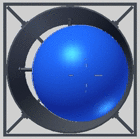
Vortex Hydro Animation
Now that we’ve got the ball rolling…we can talk about the rolling fluid turbine, as the SETUR was initially called. Basically, flowing water sets the rotor into two types of motion — it rolls around the inside of the stator, and the rotor itself is rotating, cranking the generator. It’s almost like a basketball rolling around the inside of the hoop: the basketball is sliding around the hoop as well as rotating around its center. Water flowing through the shape of the gap between the rotor and stator causes a vortex that will continuously make the entire rotor roll along the edge of the stator. However, it’s the rotation of the rotor itself that cranks the generator. Rotation-ception!12
Another aspect of the SETUR that makes it really stand out — besides its lack of blades — is that it’s not your typical micro-hydro system. It doesn’t need a dam, though you can incorporate it in a water body that already has one. It doesn’t divert from its source, though you can route water to it through piping.17 Instead, it works below the surface of your channel of choice to create its vortex.1217 As a reminder, if you want to learn more about the engineering behind the SETUR, I highly recommend Ryan’s video. The inventors also published a theoretical analysis on their design in 2022, because like all physics, there’s still a sense of mysticism and mystery to it.18
The SETUR comes in two models: the SETUR-M, which is rated for 500 W (with a 750 W maximum), and the SETUR-L, rated for 5 kW (with a 7.5 kW maximum). With the former, you can expect to produce anywhere from 4,380 kWh to 6,570 kWh per year. With the latter, you can churn out between 43,800 kWh and 65,700 kWh per year.16

SETUR Turbine Specs
The larger SETUR produces more than enough power in a year to cover the electricity consumption of the average U.S. home, which amounted to roughly 10,791 kWh in 2022.19 But it’s important to note here that those of us in the US tend to use a lot more electricity than other parts of the world, and one of the primary conveniences of SHP is its ability to easily extend to regions without grid access.20 In other words, well-sited SETUR turbines can mean more bang for your buck.
And the SETUR definitely isn’t picky. The smaller of the two models can submerge to depths of up to 50 meters (164 feet), with the larger able to operate fully submerged in 20 meters (about 66 feet) of water.1721 The turbine needs a minimum head of only 1 meter (just over 3 feet) to function, and it can also perform in water bodies with flows as low as 2 liters per second.172112 You can toss a SETUR into rivers and irrigation canals just like other SHP systems. It also has marine applications, allowing you to harness energy from ocean currents and tidal streams.1216 On top of all that, the turbines can be arranged into an array
While this is an exciting development, the SETUR’s flexibility isn’t infinite. Though its models can make use of low-flow, low-head environments in ways that previously weren’t possible with hydro, you can’t stick these things everywhere. They won’t operate below freezing temperatures, and their official manual recommends ice-plugging screens to protect them under these conditions.17 That’s one point for dams, which instead rely on reservoirs that are often deep enough to avoid winter work stoppages.22
Then there’s of course the perils of sharing the river with natural debris and of course, fish. It doesn’t seem that the SETUR has built-in safeguards against these — rather, the manuals suggest using intake screens and limiting the amount of water that flows through the system in order to protect wildlife and the device itself. Even though a SETUR system probably has a significantly lower environmental impact than a traditional dam, it still has the potential to negatively affect flora and fauna both in and out of the water.17
How can we take small hydro a step further in the name of protecting wildlife? Turbulent is one company aiming to answer that question. Based in Belgium, Turbulent markets its submersible vortex turbine as an eco- and fish-friendly form of hydropower.23 It also happens to look like a snail when viewed from above. Or a whistle.24 Or maybe a noisemaker.9 The golden ratio. You could probably develop a personality quiz based on what you see here:
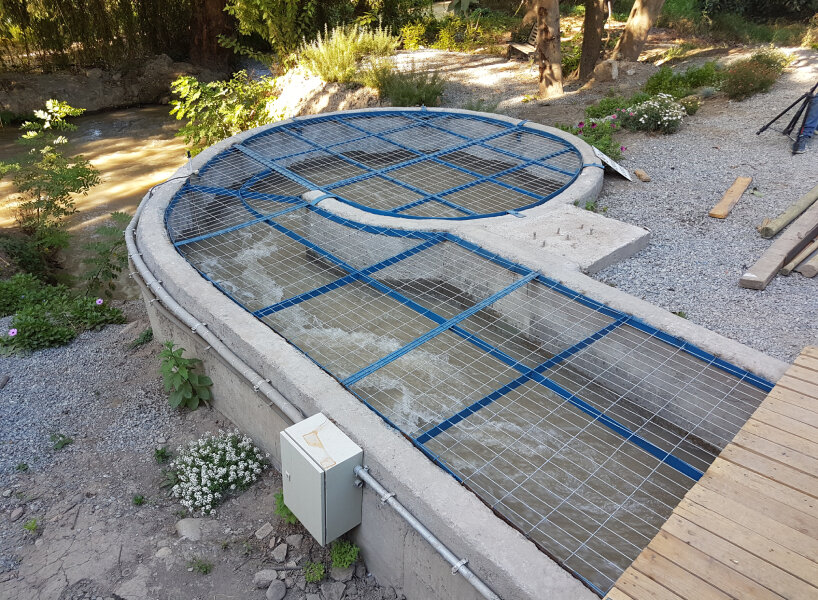
Turbulent Vortex Turbine
Any way you interpret its design, Turbulent’s smallest version of its turbine only needs a head of 1.5 meters (or about 5 feet) and a flow of 1.5 cubic meters per second (or 53 cubic feet per second).25 As a result, Turbulent’s scalability definitely opens up a lot of possibilities. And like other diversionary hydro systems, Turbulent setups involve directing flowing water through a channel to its turbine, no reservoir required.2627
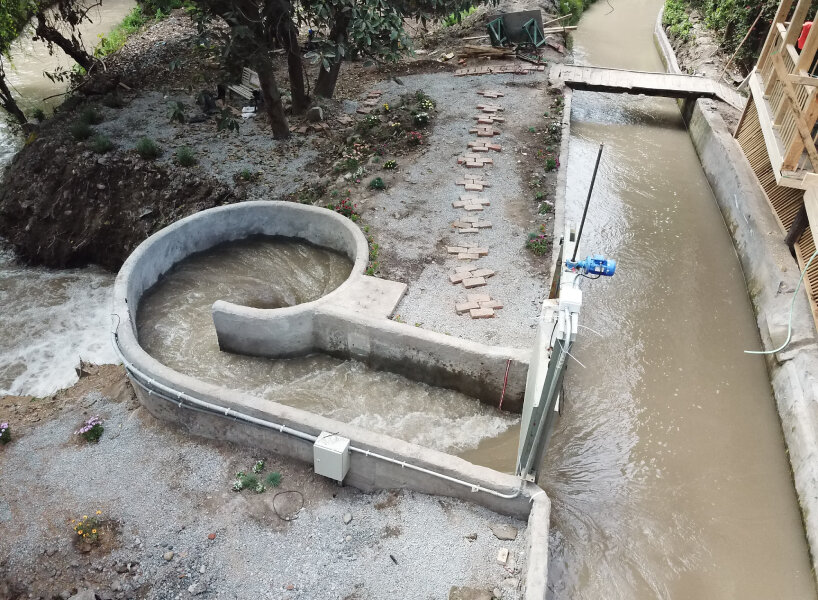
Turbulent Vortex Turbine
In fact, Turbulent claims that a micro power plant based on its tech can boast up to a 90% plant factor, also known as a capacity factor.26 Capacity factor basically boils down to the difference between what’s planned and what actually happens — just measured in electricity. It’s a comparison of a power plant’s actual production versus its potential production, based on how long it’s up and running.2930 For reference, solar’s capacity factor varies, but on average it tends to lie somewhere between 10 and 30 percent.30 On a global level, utility scale solar’s capacity factor averaged out to about 17% in 2022.31 And while that sounds like a big negative, it’s still a massive amount of power produced.
That isn’t to say that Turbulent turbines are intermittency-proof. The company itself notes that seasonality is still a concern. Water height is, well…fluid. It ebbs and flows along with rain and heat.32 This means that in hotter summers, you might have a thinner stream that leaves you producing less energy.26 Then there’s the problem of winter. Turbulent has added a rubber coating on their turbines that act as a defense against ice. If the water freezes, it expands against the rubber, squishing it without damaging the components. The ice simply stops power generation. So, the design can’t completely defeat intermittency, but it does extend the life of the turbine.33
With this in mind, you might be wondering: Why bother with multiple mini-plants when you could pool your resources into one macro-plant? Generally speaking, as factors like flow and head scale up, so does the amount of electricity generated…but so do the dangers involved.3 Going back to the Itaipú Dam for a sec, this risk-reward ratio is very plain. Between its 20 turbines at 700 MW each, its max production capacity tops out at 14,000 MW, or 14 GW.534 Those specs provide enough to cover around 90% of Paraguay’s electricity consumption and 15% of Brazil’s.34
At the same time, 13 years passed from the start of construction to the start of operations. By Itaipú’s completion, the project had destroyed the Guaíra Falls and consequently set off an influx of more than 30 invasive species between the regions that they had previously separated.35 On top of this, the governments of Brazil and Paraguay ultimately displaced at least 65,000 people in their joint effort to establish the dam.34
Meanwhile, it took the Turbulent team less than a day to install a 13 kW turbine in the Ayung River of Bali, Indonesia. The turbine supplies power to the adjacent Green School, serving over 700 students and staff. Better yet, the setup doesn’t impact the ability of fish to move freely, and the river’s natural flow is left undisturbed.1136 That’s just one of many examples of Turbulent projects you can find all over the map, from the Philippines to Chile.25
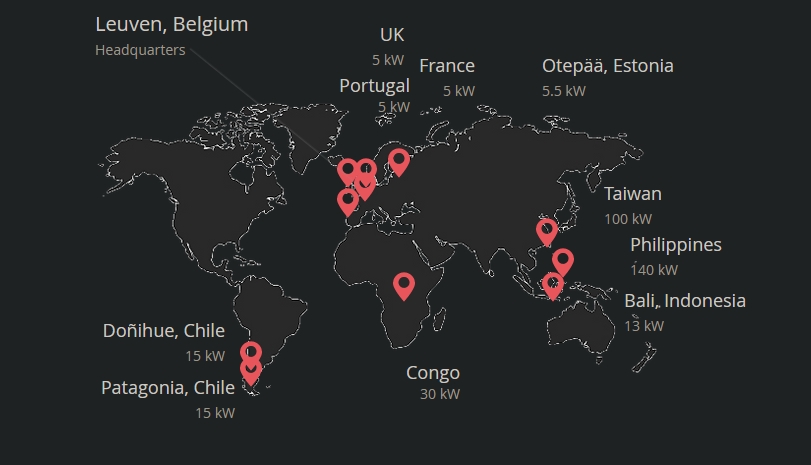
Turbulent Vortex Turbine Locations
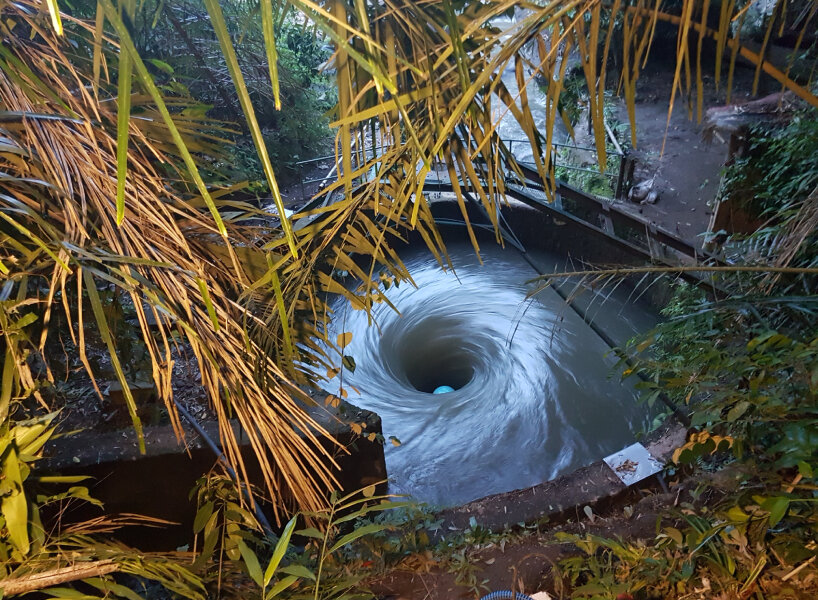
Turbulent Vortex Turbine
Thinking smaller rather than bigger also means avoiding the compounding environmental damage that manifests after the dust has settled. Remember how I mentioned dam failures earlier? Since recordkeeping began, an average of 10 dam failures occur in a given year in the U.S. Most of these happen at smaller sites, which thankfully limits the toll.37 But when things at a major dam go awry, it can cost human lives, require extensive evacuations, and devastate surrounding ecosystems.23839140
Overall, large dams can only be located in specific places and can drastically affect the ecosystem. However, they generate a lot of power, are less influenced by seasonal variations and are generally low maintenance, long-lasting installations. SHPs are more flexible in terms of installation locations, since they don’t require as much hydraulic head, and are easier on the environment. It’s good for the consumer and local power generation or off-grid needs too.
As of 2019, small hydropower systems (that is, hydro rated for less than 10 MW) had a global installed capacity of about 78 GW, according to the United Nations Industrial Development Organization.41 That’s quite a ways behind wind and solar. Small hydro is meant to work in tandem with other renewables, though, and there’s certainly no shortage of locations available for it to expand.
- Hydropower Vision Report: Full Report ↩︎
- ‘Giant Methane Factories’: Hydropower Has Long Been Touted as Clean Energy. But Is It? ↩︎
- How Hydropower Works ↩︎
- The Itaipu Hydroelectric Dam Project, Brazil ↩︎
- Itaipú Dam ↩︎
- Christ the Redeemer ↩︎
- Itaipú Dam ↩︎
- Bathroom Faucets ↩︎
- 15 – 70 kW HFLH Vortex Turbine ↩︎
- Turbulent Micro Hydro Plant in Green School Bali ↩︎
- Rehabilitation of a Low-Head Gravitational Vortex Site with an Improved Vortex Turbine ↩︎
- Miroslav Sedláček:Rolling fluid turbine ↩︎
- Power generating method and apparatus ↩︎
- Bibliographic data: EP2171260 (B1) ― 2011-05-04 ↩︎
- Inventors and the invention: The Rolling Fluid Turbine ↩︎
- Welcome to Vortex Hydrokinetics ↩︎
- SETUR-L Hydraulic Vortex Turbine User’s Manual ↩︎
- Theoretical Analysis of Rolling Fluid Turbines ↩︎
- How much electricity does an American home use? ↩︎
- Energy Production and Consumption ↩︎
- SETUR-M Hydraulic Vortex Turbine User’s Manual ↩︎
- How do hydro-electric dams still generate power if the rivers freeze? ↩︎
- Turbulent updates the focus of its technology. ↩︎
- Design and analysis of a portable spiral vortex hydro turbine for a Pico Hydro Power Plant ↩︎
- The Vortex Turbine ↩︎
- Pros & Cons of Mini Hydropower Plants ↩︎
- Types of Hydropower Plants ↩︎
- Turbulent updates the focus of its technology. ↩︎
- Plant factor/Capacity Factor definition ↩︎
- The economic limitations of wind and solar power ↩︎
- Average capacity factor for utility-scale solar PV systems worldwide from 2010 to 2022 ↩︎
- A change in season, a change in water? ↩︎
- Answering your FAQs. ↩︎
- Itaipu Hydroelectric Dam ↩︎
- A massive invasion of fish species after eliminating a natural barrier in the upper rio Paraná basin ↩︎
- Turbulent Projects ↩︎
- Dam Failures in the U.S. ↩︎
- As the Harms of Hydropower Dams Become Clearer, Some Activists Ask, ‘Is It Time to Remove Them?’ ↩︎
- Why Were So Many Species of Mussels Just Declared Extinct? ↩︎
- Hydropower Special Market Report ↩︎
- World Small Hydropower Development Report 2019 ↩︎















Comments